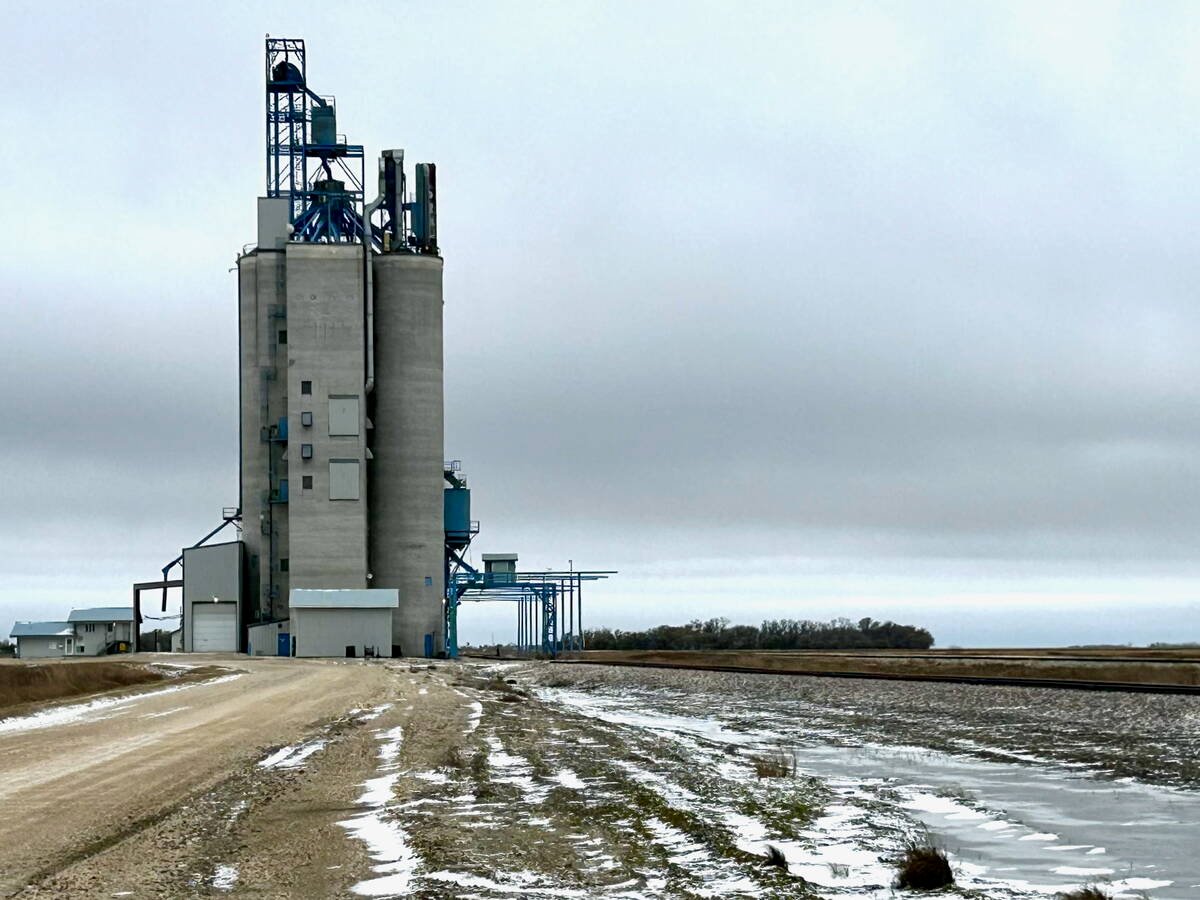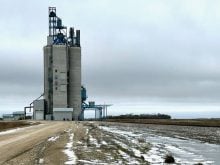OUTLOOK, Sask. – This is shaping up to be the third coolest year for corn since 1931.
Saskatchewan will be lucky to reach 2,000 corn heat units this year, Terry Hogg, an irrigation agronomist with Prairie Farm Rehabilitation Administration, told growers at a field day at the irrigation diversification centre.
That compares with 2,400 units in 2003.
“Some varieties will never make it,” he said.
The CHU is the number of heat units required to achieve 32 percent kernel moisture.
Hogg said crops were slow to emerge in a cool May, advanced quickly through a hot July and then slowed their development in the colder August and September temperatures.
Read Also

Manitoba grain elevator ownership expands
Carman-based Linear Grain buys Fannystelle elevator from Bunge, another three elevators sold to Morden’s BP & Sons Grain and Storage Inc.
Quality will be poorer than average because of poor cob development, resulting in below average yields, he said.
Hogg hoped the plants could continue to develop as long as possible, but noted killing frosts of at least Ð2 C will help dry down the plants for harvest.
Les Bohrson, senior agrologist with Saskatchewan Agriculture at Swift Current, Sask., expected to see 12 tonne yields of corn silage this year, a drop from last year’s 18 tonne average.
While excellent stands of corn were seen on dry and irrigated land around Saskatoon, Bohrson said all months except July were unseasonably cool for corn.
“Corn had a poor start and a difficult finish,” he said of the 20,000 acres of field corn in Saskatchewan.
Good moisture and cool, cloudy days delayed the Alberta corn crop by two weeks, said Barry Yaremcio, beef and forage specialist with Alberta Agriculture at Stettler.
“The corn cobs have formed but the milk line isn’t there.”
He said most fields are standing still in their development, with most producers still hoping the crop will mature and dry in time for harvest.
“My gut feeling is that a good barley and oat crop will outyield corn,” he said.
Tom van Moorsel, sales manager with Pioneer Hi-Bred in Red Deer, said the quality is good now, but the first hard frosts forecast for this week could change that.
“It’s not corn weather,” he said, noting silage corn is three weeks behind normal development.
In the south, where about 36,000 acres of field corn are grown, farmers will be taking off immature silage, said Corny Van Dasselaar of Pioneer in Lethbridge.
He predicted that yields will be 10 percent below average.














